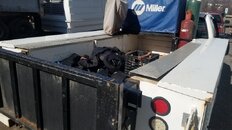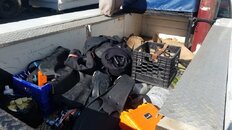MidOH
Banned
Agree, but four minutes not paying attention to your CCR while it's flashing red in your face? Maybe one should pick an other hobby? To me there no valid reasons for not paying attention to the CCR. If you're too busy, bail out and go OC just to be save. A CCR requires you to pat attention all the time!
I know there have been fatalities and yes, I know the risk on the surface is greater. But you have to realise you're not diving OC. The adagium here is: know your ppo at all times, no matter what. The lesson learned in most accidents is lack of attention or/and complacency. Very few accidents can be attributed to mechanical failure.
This.
If we get past, that you have to watch the ccr, and that po2 shifts more during shallow depth changes,
.....is there anything else bad about a ccr within rec limits?






